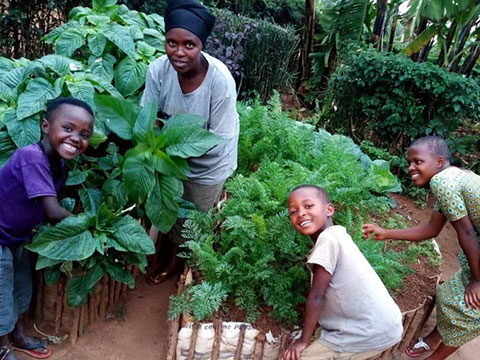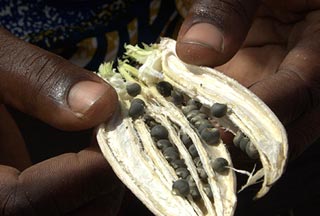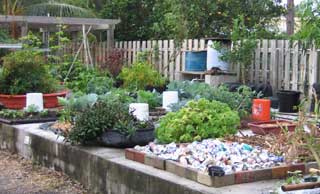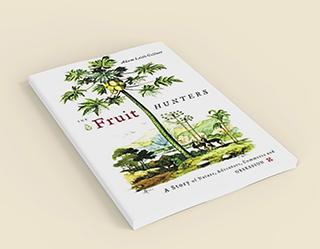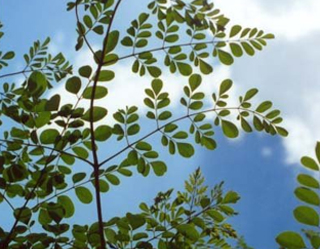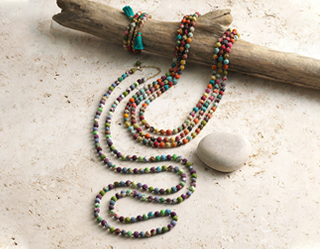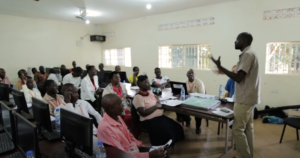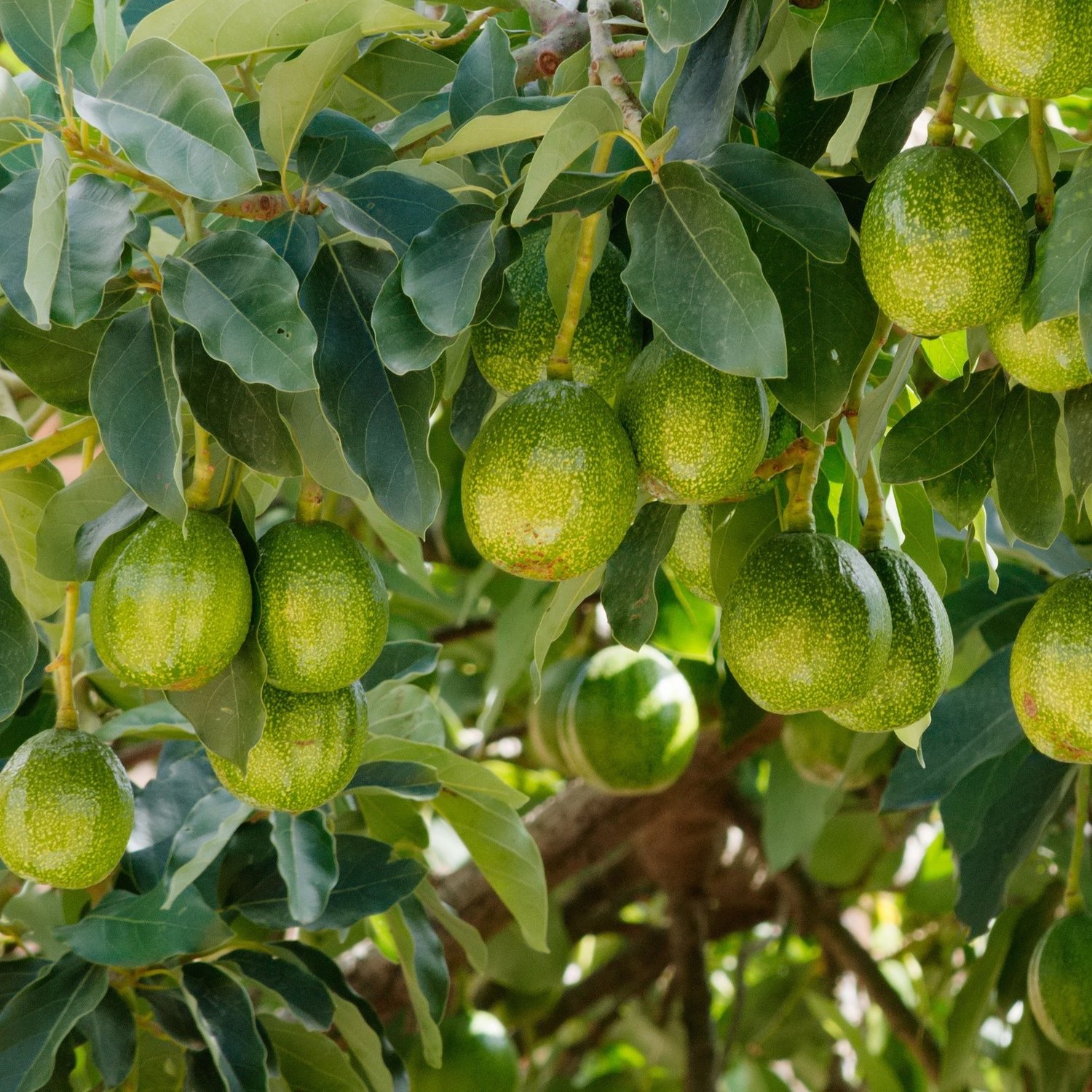Persea americana, Persea nubigena
Contributed by Dr. Martin Price, ECHO’s founding CEO
Avocados are native to Central America and Mexico. From these regions, three distinct races have been recognized: West Indian (WI), Guatemalan (G) and Mexican (M). These races have been crossed to create innumerable hybrids. The ancestry determines cold hardiness, skin texture, and time of fruiting, among other things. The West Indian race is the least hardy (24-28 ºF). The Mexican strains are the hardiest (16-24 ºF), but do not always fruit well in Florida’s humid climate. See Table 1 for a comparison of other features of these three avocado races.
Choosing an appropriate planting location for avocados is extremely important. The first priority is a location that is high and has no history of saturated or flooded soils. Avocados demand well-drained soils, as flooding for 24-48 hours can kill them. They are especially susceptible to Phytophthera, a common soil- borne fungus that causes root rot in avocado, papaya, citrus, and other susceptible plants. Phytophthera and flooding are a deadly combination for avocado. The second priority is choosing a location with full sun.
Much energy from the sun is needed to produce the high numbers of large-seeded and oil-rich fruits. They also typically exchange their leaves each year in the spring, resulting in a bare appearance until new growth appears. The third consideration is space. Remember that avocado trees can become huge, easily reaching 40’. They can be pruned to control size (immediately after fruit is fully harvested) but their habit is to become large.
ECHO has also encountered problems from the Avocado Lace Bug (Acysta perseae) that feeds on the underside of leaves, causing brown blotches and premature leaf drop. Populations are especially high in late fall and, if possible, they should be controlled to prevent spread to newly emerging spring growth.
Avocados are of two flower types, A and B, depending on when they are shedding pollen. A-type flowers shed pollen in the afternoon; B-type flowers shed pollen in the morning. There are different theories about avocado pollination, but recent research seems to demonstrate that self-pollination is the norm, meaning that only one tree is necessary for fruit production. The home fruit enthusiast might want to read this short article to understand what s/he is observing as the tree(s) flower. http://ucavo.ucr.edu/Flowering/FloweringBasics.html
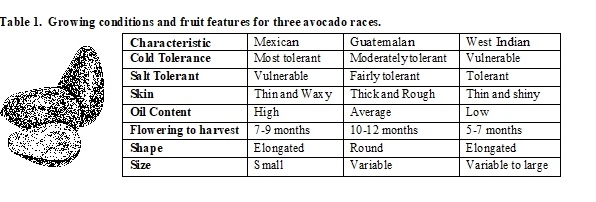
Perspective: If you are a seasonal resident, be sure to select varieties that will bear when you are in Florida. If you have room for several varieties, you can extend the harvest season considerably by selecting suitable varieties.
Manager’s Choice: If you prefer small California/Mexican types as found in grocery stores (Hass-type avocados) you might consider Brogdon (Summer bearing) and Lula (Fall bearing). If you prefer the large fruited avocados typically grown in Florida (a.k.a Florida Pears or Alligator Pears) two good options are Monroe (Fall/Winter bearing) and Choquette (Fall/Winter).
Fruiting Seasons for Selected Avocado Varieties in Southwest Florida
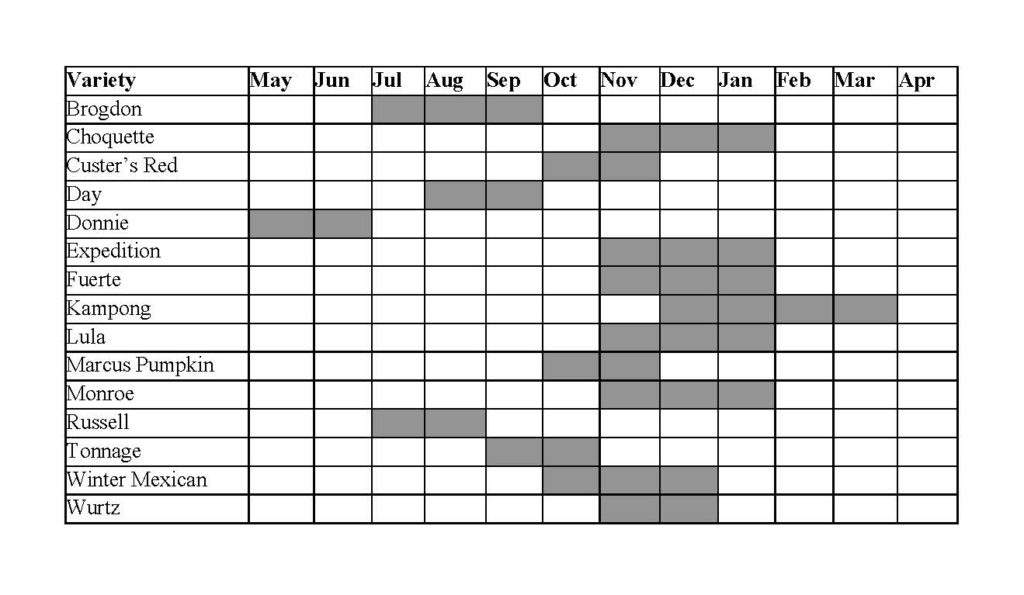
‘Brogdon’ (A and B type), a M x WI cross, is productive and hardy to 22º F. It is the most cold-hardy variety we commonly stock in our nursery. It bears small, smooth, black-skinned fruits (8-14 oz.) with high quality green flesh. For Floridians looking for a ‘California’ or Mexican type similar to ones found in the grocery store, Brogdon is a good choice. Its strength is its cold hardiness and excellent, rich flavor. Drawbacks include a large seed and paper thin skin that makes fruit difficult to peel. (It is so easy to scoop the soft flesh from the half-shell—does anyone really peel an avocado?) Brogdon ripens July-Sept.
‘Choquette’ (A type), a G x WI cross, is oval-shaped and large (24-40 oz.). Skin is glossy, smooth, and slightly leathery. The smooth flesh is of an excellent quality with 13% oil and a mild nutty flavor. Choquette is similar to Monroe in fruit size and quality; both are excellent choices for those interested in a very good- tasting, large ‘Florida pear’ shape. The Choquette has an open, spreading growth habit. Freeze damage in established trees occurs around 26º F. Season is Nov-Jan. with heavy bearing in alternate years.
‘Day’ (A type) is a G x WI cross. Fruit is small (8-16 oz.), pear-shaped with an excellent rich, nutty taste. Skin is green and dull. The tree is very productive and cold hardy; Dr. Price’s tree in North Ft. Myers, FL survived the terrible freeze in 1989 with little damage while a nearby avocado was killed. Bears Aug-Sept.
‘Donnie’ (A type), a WI type, is cold sensitive. It is the earliest commercial variety (May – June) and bears large fruit (greater than 1 lb). They are extremely mild, to the point of being bland. Its popularity is due to its early season.
‘Expedition’ (Unknown flower type) likely has Guatemalan heritage. The round fruit is medium to large (bigger than Lula), with dull, dark green skin and contains a large seed. David Fairchild selected this high quality cultivar but much remains unknown about it. The ‘Expedition’ in our arboretum sustained only minor damage during the January freeze of 2009, which severely damaged many West Indian cultivars. Expedition bears Nov-Jan., but the fruit can hang on the tree through February.
‘Fuerte’ (B type) is a M x G cross commercially grown in many regions of the world. The fruit is small (12-14 oz.) with dark green bumpy skin. This cultivar is better suited to drier climates— a wet summer can cause the fruit to rot. This variety is not recommended for Florida. Bears Nov-Dec.
‘Kampong’ (B type) is a Guatemalan race with high cold tolerance, but low yields. It bears a green fruit (14-24 oz) from Dec 1 to March 31.
‘Lula’ (A type), a G x WI cross, produces medium (14-24 oz.), pear-shaped fruit with nearly smooth skin. Lula has a large seed and is slightly sweet with good flavor. Formerly grown commercially, it is a good producer, but very susceptible to scab (a disease which only harms the appearance). Lula is hardy to central Florida most years, freezing at about 25º F. Bears Nov-Jan.
‘Marcus Pumpkin’ has very high cold tolerance, a moderate yield and a huge fruit – the fruits can weigh over 3 lbs. The flavor is very mild and is often described as watery. Its main appeal is its very large fruits. It bears Oct 15 to Nov 30.
‘Miguel’ bears 1 ½ – 2 pound fruits ripening August to September Fruits are large, productive and of excellent eating quality.
‘Monroe’ is a G x WI cross grown commercially in the Miami/Homestead area. This variety is prolific, consistently bearing large fruits that mature in the fall. Flesh is of very good quality lacking the watery texture often found in other large fruited types. Monroe’s growth habit is upright, rather than spreading and is cold hardy to 26ºF. Monroe bears Nov-Dec.
‘Russell’ (A type) a West Indies avocado, is fairly frost sensitive. The fruit is 12-18 inches long, club- shaped, often weighing between 16-24 oz. Fruits have a smooth, glossy, green skin and a small seed. This cultivar yields well and is of high eating quality. Russell bears July-Aug.
‘Tonnage’ (B type) belongs to the Guatemalan race. Fruit is medium sized (14-24 oz.), green, and has thick, rough skin. Production is good, but flavor is very mild and inferior to many other varieties. Freeze damage in established trees occurs around 26º F. The tree is tall, upright, and in SW Florida bears Sep-Oct.
